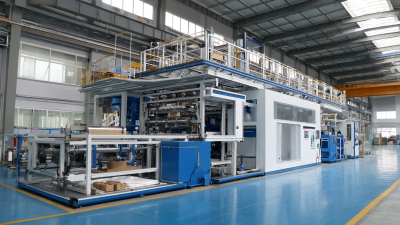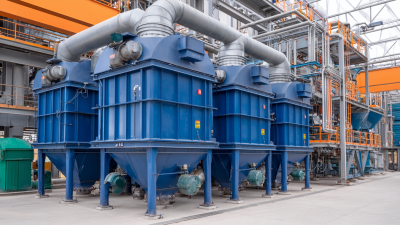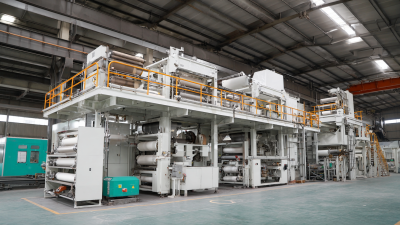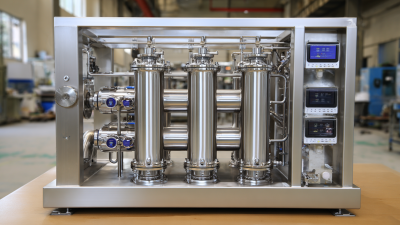Understanding the Evolution of Pulp Molding Machines: A Deep Dive into Their Types and Applications
In recent years, the pulp molding machine has become a pivotal component in various industries, revolutionizing the way we approach sustainable packaging and product design. This innovative technology, which shapes biodegradable pulp into diverse forms, not only minimizes waste but also meets the growing demand for eco-friendly alternatives. As we delve deeper into the evolution of these machines, it is essential to explore the different types available and their specific applications across sectors such as foodservice, electronics, and cosmetics. By understanding the evolution and functionality of pulp molding machines, we can appreciate the numerous reasons behind their increasing adoption, from cost efficiency to environmental benefits. This blog will embark on a comprehensive journey through the landscape of pulp molding machines, highlighting key advancements and their crucial role in shaping a greener future.

The Historical Development of Pulp Molding Machines in Manufacturing
The historical development of pulp molding machines has played a pivotal role in the manufacturing sector, particularly in the expansion of sustainable packaging solutions. Emerging in the early 20th century, these machines have evolved from simple hand-operated devices to highly sophisticated automated systems that cater to a diverse range of applications. Over the decades, advancements in technology and increasing environmental awareness have driven the market for pulp molding, transforming it into a significant segment within the packaging industry.
According to industry reports, the global pulp molding machine market is projected to grow significantly, with estimates indicating an increase from $11.79 billion in 2025 to $15.40 billion by 2032, translating to a compound annual growth rate (CAGR) of 3.9%. This growth reflects the rising demand for eco-friendly packaging solutions as companies strive to reduce their environmental footprint. The versatility of pulp molding machines allows for the production of various items, from food containers to protective packaging, further fueling their adoption across different sectors. As manufacturing processes continue to innovate, the evolution of pulp molding machines remains integral to achieving sustainable production goals.
Different Types of Pulp Molding Machines and Their Unique Features
Pulp molding machines have evolved significantly, adapting to the needs of various industries while enhancing efficiency and sustainability. Among the different types of pulp molding machines, the most common are the egg tray machines, cup molding machines, and the industrial packaging machines. Each type boasts unique features tailored to specific applications. For instance, egg tray machines are designed for high-volume production and can create trays with minimal waste, achieving over 98% material utilization. In contrast, cup molding machines specialize in producing biodegradable cups, aligning with the growing consumer demand for eco-friendly packaging solutions. Reports indicate that the global market for pulp molding machines is projected to grow by 5.6% annually through 2026, driven by advances in technology and increasing awareness of environmental issues.
When selecting a pulp molding machine, it's crucial to consider the type of raw material being used. High-quality recycled paper generally yields better results in terms of strength and durability. Additionally, investing in machines equipped with advanced drying systems can significantly reduce production time and energy consumption.
Tip: Regular maintenance of pulp molding machines is essential for ensuring optimal performance and longevity. Keep the machinery clean and check for wear and tear frequently to avoid unexpected downtimes.
Key Applications of Pulp Molding Machines Across Various Industries
Pulp molding machines have gained significant traction across various industries due to their versatility and eco-friendly approach. These machines are primarily used to produce packaging materials from recycled paper and cardboard, which not only helps reduce waste but also promotes sustainable practices. In the food industry, pulp molded packaging is instrumental in creating protective containers that ensure product safety and hygiene, all while being biodegradable. Additionally, companies are increasingly turning to these machines to produce customized packaging solutions that meet specific design and functional requirements.
Another key application of pulp molding machines is in the manufacture of disposable tableware. With the growing movement towards reducing plastic usage, many foodservice businesses now utilize pulp molded plates, bowls, and trays for serving food. This shift aligns with consumer preferences for sustainable products, making pulp molding an attractive option for restaurants and caterers. Furthermore, in the electronics industry, these machines provide cushioning and protective packaging for sensitive components, minimizing the risk of damage during shipping and handling. As industries seek more sustainable alternatives, the demand for pulp molding machines continues to expand, highlighting their essential role in modern manufacturing processes.
Understanding the Evolution of Pulp Molding Machines: A Deep Dive into Their Types and Applications - Key Applications of Pulp Molding Machines Across Various Industries
| Type of Pulp Molding Machine | Key Applications | Industries | Benefits |
|---|---|---|---|
| Single-stage Pulp Molding Machine | Production of trays and containers | Food packaging, Electronics | Cost-effective, High production rate |
| Multi-stage Pulp Molding Machine | Production of complex shapes | Automotive, Appliances | Versatile design capabilities, Enhanced quality |
| Automatic Pulp Molding Machine | High-volume production of disposable products | Food service, Retail | Increased efficiency, Labor saving |
| Eco-friendly Pulp Molding Machine | Biodegradable packaging solutions | Cosmetics, Health care | Sustainability, Reduced carbon footprint |
| Custom Pulp Molding Systems | Tailored solutions for specialized products | Specialty goods, Electronics | Highly customizable, Niche market focus |
Comparative Analysis: Pulp Molding vs. Traditional Packaging Solutions
The landscape of packaging solutions is evolving rapidly, particularly with the emergence of pulp molding as a viable alternative to traditional materials. Pulp molded products, made from renewable resources such as virgin and recycled pulp, provide an eco-friendly solution for businesses looking to minimize their environmental impact. Unlike conventional packaging, which often relies on plastics and non-biodegradable materials, pulp molding leverages natural fibers, making it a sustainable choice for various applications, including food service and electronics packaging.
**Tips for Choosing Pulp Molding:**
1. Consider the specific needs of your product. Pulp molding offers various options, including trays and clamshells, ensuring that you can find the right fit for your packaging requirements.
2. Explore the benefits of using natural fiber composites. These materials enhance strength and durability while being fully biodegradable, striking a balance between performance and sustainability.
3. Stay informed about advancements in packaging technologies, such as improvements in wet-strength properties for molded pulp materials, which can further enhance packaging performance and usability.
By analyzing these alternatives, companies can strategically position themselves within the burgeoning molded fiber packaging market, which is projected to grow significantly in the coming years.

Future Trends and Innovations in Pulp Molding Technology
The pulp molding industry is on the brink of a revolutionary transformation as advancements in technology pave the way for smarter, more efficient production processes. One of the key trends shaping the future of pulp molding technology is the integration of automation and artificial intelligence. These innovations not only enhance the operational efficiency of pulp molding machines but also improve product consistency and quality. Manufacturers are increasingly adopting automated systems that reduce labor costs and minimize human error, positioning themselves to meet the growing demand for sustainable packaging solutions.

Another significant trend is the development of eco-friendly raw materials, driven by consumer awareness and regulatory pressures regarding environmental impact. The emergence of bioplastics and other biodegradable materials allows pulp molding machines to produce sustainable products that align with circular economy principles. Additionally, advancements in recycling technologies are enabling the use of reclaimed fibers, further reducing waste and promoting resource efficiency within the industry. As these trends continue to evolve, the pulp molding sector will not only enhance its production capabilities but also play a crucial role in fostering a more sustainable future for manufacturing.
Related Posts
-

Unveiling the Advantages of the Best Pulp Molding Machines for Diverse Product Applications
-

7 Reasons Why Bag Filter Systems are Essential for Reducing Industrial Emissions
-

Innovative Solutions for Optimizing Pulp and Paper Production Efficiency
-

Ultimate Guide to Choosing the Right Bagasse Plate Making Machine for Your Business
-

The Future of Advanced Vacuum Filtration Solutions
-

Understanding Industry Production Standards for the Best Micro Filtration System in Use